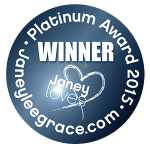Staphylococcus is a genus of bacteria that includes various species, some of which can significantly impact human health and cause disease. Here is an overview of how Staphylococcus interacts with human health:
- Skin infections: Staphylococcus species, such as S. aureus and S. epidermidis, are commonly found on the skin and can cause skin infections, including cellulitis, impetigo, and abscesses. Invasive infections may require medical intervention or surgical drainage.1Del Giudice P. Skin Infections Caused by Staphylococcus aureus. Acta Derm Venereol. 2020 Apr 20;100(9):adv00110. doi: 10.2340/00015555-3466.2Taylor TA, Unakal CG. Staphylococcus aureus Infection. [Updated 2022 Jul 18]. In: StatPearls [Internet]. Treasure Island (FL): StatPearls Publishing; 2023 Jan-. Available from: https://www.ncbi.nlm.nih.gov/books/NBK441868/
- Methicillin-resistant Staphylococcus aureus (MRSA): MRSA is a strain of S. aureus resistant to methicillin and other antibiotics, complicating infection treatment. MRSA can cause skin infections, pneumonia, and bloodstream infections and can be life-threatening if not treated appropriately.3Olaniyi R, Pozzi C, Grimaldi L, Bagnoli F. Staphylococcus aureus-Associated Skin and Soft Tissue Infections: Anatomical Localization, Epidemiology, Therapy and Potential Prophylaxis. Curr Top Microbiol Immunol. 2017;409:199-227. doi: 10.1007/82_2016_32.4Algammal AM, Hetta HF, Elkelish A, Alkhalifah DHH, Hozzein WN, Batiha GE, El Nahhas N, Mabrok MA. Methicillin-Resistant Staphylococcus aureus (MRSA): One Health Perspective Approach to the Bacterium Epidemiology, Virulence Factors, Antibiotic-Resistance, and Zoonotic Impact. Infect Drug Resist. 2020 Sep 22;13:3255-3265. doi: 10.2147/IDR.S272733.5Siddiqui AH, Koirala J. Methicillin-Resistant Staphylococcus aureus. [Updated 2023 Apr 2]. In: StatPearls [Internet]. Treasure Island (FL): StatPearls Publishing; 2023 Jan-. Available from: https://www.ncbi.nlm.nih.gov/books/NBK482221/
- Nosocomial infections: Staphylococcus species, particularly S. aureus and S. epidermidis, are known for causing hospital-acquired infections, often linked to contaminated medical devices, catheters, or surgical wounds. Strict infection control measures in healthcare settings are essential to prevent their spread.6Samia NI, Robicsek A, Heesterbeek H, Peterson LR. Methicillin-resistant staphylococcus aureus nosocomial infection has a distinct epidemiological position and acts as a marker for overall hospital-acquired infection trends. Sci Rep. 2022 Oct 11;12(1):17007. doi: 10.1038/s41598-022-21300-6.7Stamm AM, Long MN, Belcher B. Higher overall nosocomial infection rate because of increased attack rate of methicillin-resistant Staphylococcus aureus. Am J Infect Control. 1993 Apr;21(2):70-4. doi: 10.1016/0196-6553(93)90227-u.
- Food-borne illness: Some strains of S. aureus can produce toxins that cause foodborne illness, resulting in symptoms like nausea, vomiting, and diarrhoea. Proper food handling and hygiene practices can help prevent staphylococcal food poisoning.8Kadariya J, Smith TC, Thapaliya D. Staphylococcus aureus and staphylococcal food-borne disease: an ongoing challenge in public health. Biomed Res Int. 2014;2014:827965. doi: 10.1155/2014/827965.9Wendlandt S, Schwarz S, Silley P. Methicillin-resistant Staphylococcus aureus: a food-borne pathogen? Annu Rev Food Sci Technol. 2013;4:117-39. doi: 10.1146/annurev-food-030212-182653.10Sergelidis D, Angelidis AS. Methicillin-resistant Staphylococcus aureus: a controversial food-borne pathogen. Lett Appl Microbiol. 2017 Jun;64(6):409-418. doi: 10.1111/lam.12735.
- Toxic shock syndrome: Certain strains of S. aureus can produce toxins that lead to toxic shock syndrome, a rare but life-threatening condition characterised by fever, rash, and organ dysfunction. Early diagnosis and treatment are crucial for a favourable outcome.11Ross A, Shoff HW. Toxic Shock Syndrome. [Updated 2022 Sep 2]. In: StatPearls [Internet]. Treasure Island (FL): StatPearls Publishing; 2023 Jan-. Available from: https://www.ncbi.nlm.nih.gov/books/NBK459345/12DeVries AS, Lesher L, Schlievert PM, Rogers T, Villaume LG, Danila R, Lynfield R. Staphylococcal toxic shock syndrome 2000-2006: epidemiology, clinical features, and molecular characteristics. PLoS One. 2011;6(8):e22997. doi: 10.1371/journal.pone.0022997.
In summary, Staphylococcus bacteria play a significant role in human health, causing a range of infections, from skin infections to life-threatening conditions like toxic shock syndrome. Understanding and addressing the risks associated with the presence of Staphylococcus species in your microbiome sample is vital for protecting the delicate balance of your gut microbial ecosystem.
Where to find Staphylococcus in the Chuckling Goat Gut Microbiome Test
You will find your Staphylococcus scores in the “Pathogens” report in your Chuckling Goat Gut Microbiome Test results. Guidance on how to work with pathogens like Staphylococcus will be featured in your Personal Action Plan. Please note that this information is not intended to be a substitute for professional medical advice, diagnosis, or treatment. Always seek the advice of your GP or other qualified health provider if you have any questions about Staphylococcus.
Synonyms: Staphylococcus species, Staphylococcus aureus, Staphylococcus epidermidis, Staphylococcus infection
Important disclaimer
The Chuckling Goat Gut Microbiome Handbook is an educational resource built to translate complex science into plain English. The information provided on this page is not intended to be a substitute for professional medical advice, diagnosis, or treatment. Always seek the advice of your GP or other qualified health provider with any questions you may have regarding a medical condition. Always check with your GP for interactions with medications/health conditions before changing your diet or starting to take food supplements.
References
- 1Del Giudice P. Skin Infections Caused by Staphylococcus aureus. Acta Derm Venereol. 2020 Apr 20;100(9):adv00110. doi: 10.2340/00015555-3466.
- 2Taylor TA, Unakal CG. Staphylococcus aureus Infection. [Updated 2022 Jul 18]. In: StatPearls [Internet]. Treasure Island (FL): StatPearls Publishing; 2023 Jan-. Available from: https://www.ncbi.nlm.nih.gov/books/NBK441868/
- 3Olaniyi R, Pozzi C, Grimaldi L, Bagnoli F. Staphylococcus aureus-Associated Skin and Soft Tissue Infections: Anatomical Localization, Epidemiology, Therapy and Potential Prophylaxis. Curr Top Microbiol Immunol. 2017;409:199-227. doi: 10.1007/82_2016_32.
- 4Algammal AM, Hetta HF, Elkelish A, Alkhalifah DHH, Hozzein WN, Batiha GE, El Nahhas N, Mabrok MA. Methicillin-Resistant Staphylococcus aureus (MRSA): One Health Perspective Approach to the Bacterium Epidemiology, Virulence Factors, Antibiotic-Resistance, and Zoonotic Impact. Infect Drug Resist. 2020 Sep 22;13:3255-3265. doi: 10.2147/IDR.S272733.
- 5Siddiqui AH, Koirala J. Methicillin-Resistant Staphylococcus aureus. [Updated 2023 Apr 2]. In: StatPearls [Internet]. Treasure Island (FL): StatPearls Publishing; 2023 Jan-. Available from: https://www.ncbi.nlm.nih.gov/books/NBK482221/
- 6Samia NI, Robicsek A, Heesterbeek H, Peterson LR. Methicillin-resistant staphylococcus aureus nosocomial infection has a distinct epidemiological position and acts as a marker for overall hospital-acquired infection trends. Sci Rep. 2022 Oct 11;12(1):17007. doi: 10.1038/s41598-022-21300-6.
- 7Stamm AM, Long MN, Belcher B. Higher overall nosocomial infection rate because of increased attack rate of methicillin-resistant Staphylococcus aureus. Am J Infect Control. 1993 Apr;21(2):70-4. doi: 10.1016/0196-6553(93)90227-u.
- 8Kadariya J, Smith TC, Thapaliya D. Staphylococcus aureus and staphylococcal food-borne disease: an ongoing challenge in public health. Biomed Res Int. 2014;2014:827965. doi: 10.1155/2014/827965.
- 9Wendlandt S, Schwarz S, Silley P. Methicillin-resistant Staphylococcus aureus: a food-borne pathogen? Annu Rev Food Sci Technol. 2013;4:117-39. doi: 10.1146/annurev-food-030212-182653.
- 10Sergelidis D, Angelidis AS. Methicillin-resistant Staphylococcus aureus: a controversial food-borne pathogen. Lett Appl Microbiol. 2017 Jun;64(6):409-418. doi: 10.1111/lam.12735.
- 11Ross A, Shoff HW. Toxic Shock Syndrome. [Updated 2022 Sep 2]. In: StatPearls [Internet]. Treasure Island (FL): StatPearls Publishing; 2023 Jan-. Available from: https://www.ncbi.nlm.nih.gov/books/NBK459345/
- 12DeVries AS, Lesher L, Schlievert PM, Rogers T, Villaume LG, Danila R, Lynfield R. Staphylococcal toxic shock syndrome 2000-2006: epidemiology, clinical features, and molecular characteristics. PLoS One. 2011;6(8):e22997. doi: 10.1371/journal.pone.0022997.













